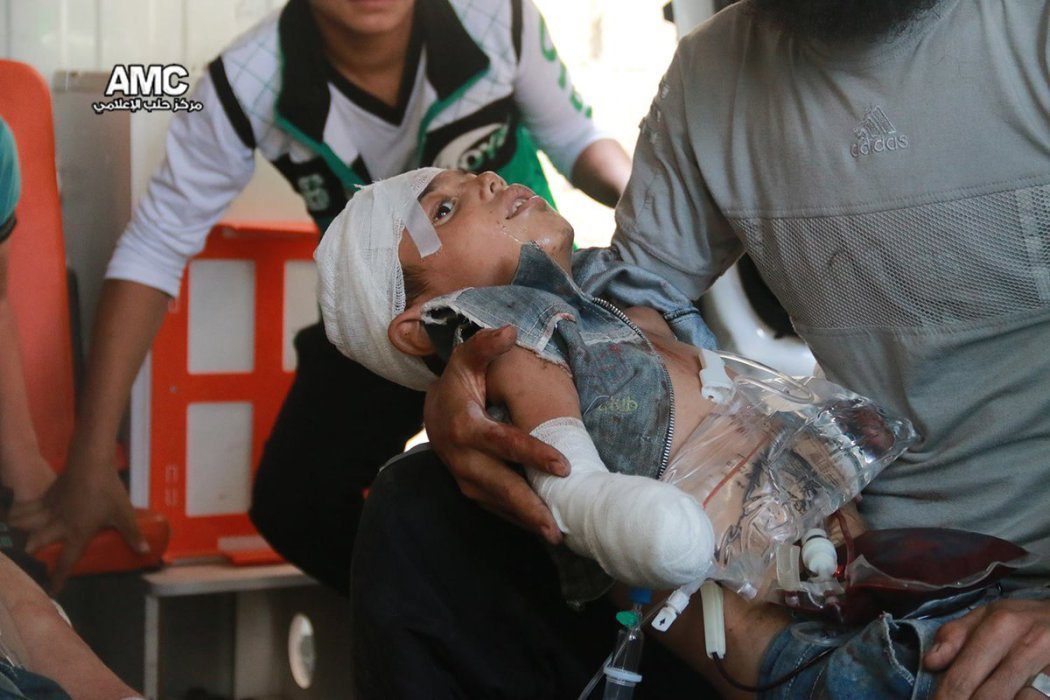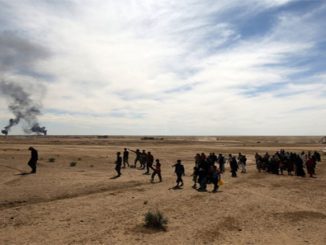
Civilians in eastern Aleppo faced long months of the worst humanitarian crisis during in the six-year war, only to be evacuated to another area carrying with them the marks of their long suffer from siege and brutal bombardment.
The long months of crippling siege on 275.000 civilians in eastern Aleppo, starvation policy, daily bombardment, fierce clashes and bloody massacres ended when the Assad regime and its allies were able to oblige the rebels in Aleppo to surrender and make an agreement to leave the area they have been holding since 2012 after losing more than 90% of it.
More than 1500 civilians were killed and thousands were injured from September until the announcement of the ceasefire, and the residents had lived in great deprivation without functioning hospitals and with little electricity and water in freezing winter conditions.
As part of an agreement between Turkey and Russia, 40.000 of rebels and civilians were evacuated from eastern Aleppo to rebel-held Idlib, allowing the Assad regime to take full control of the city after years of fighting.
The misery of the civilians is unlikely to end in Idlib, as they carried along with them the horrific injuries they got in the siege.
Idlib is overwhelmed
Medical staff is now overwhelmed by the influx of wounded Aleppans. Thousands are suffering from infected shrapnel wounds, hypothermia, and malnutrition. Surgeons are operating for up to 12 hours a day, and medical facilities are running at double capacity.
Doctors in Idlib are seeing dozens of “infected and gangrenous” wounds, surgeon Mounir Hakimi told al-Jazeera, noting that some patients may need amputations, or could be left with other long-term disabilities.
Civilians are also presenting symptoms of psychological trauma.
Idlib’s medical infrastructure was already damaged before the Aleppo evacuation. Five years of barrel bomb attacks and a year of Russian air power have maimed its hospitals, civil defense force headquarters and schools.
The province suffered 11 massacres in November, second only to Aleppo across Syria, according to analysis from the Syrian Network for Human Rights monitoring group. It defines a massacre as the killing of five or more civilians at once.
“Already the medical facilities that we are sponsoring and running are under huge pressure – even before the evacuation started,” Hakimi said. “Now we have to cope with a bigger population and funds are waning. The machines are not going to deal with the scale of the casualties.”
Around 630 people with life-threatening injuries have been fast-tracked out of Syria.
Turkish help
About 246 injured civilians evacuated from the Syrian city of Aleppo have been treated at hospitals in Turkey, the Directorate General of Press and Information announced on Monday.
The injured were treated at hospitals in southeastern Hatay province shortly after they were evacuated from western Aleppo to Idlib, another Syrian city under opposition control, the directorate said in a statement.
Meanwhile, 34 of the injured civilians succumbed to their wounds in southern Hatay province.
The statement also said 33 Aleppans had been discharged from hospitals; 98 of the injured were children.
Ambulances and medical teams are stationed at the border to help the injured from Aleppo.
Turkish relief foundations and humanitarian organizations were continuing to provide aid to evacuated people in Idlib. A total of 1,010 aid trucks, including 575 from the Turkish Red Crescent and 435 from the IHH humanitarian relief foundation, have reached the area since the beginning of December.
“We will continue our work”
Some aid workers who themselves had to leave east Aleppo have vowed to continue working from their new homes.
The Syrian American Medical Society, which supported hospitals in Aleppo city, is planning to move into three new underground facilities in the rebel-held countryside and Idlib. All of its medical staff who left Aleppo city will continue working with the organization.
“I decided to carry on my work with the civil defense force because even though we left Aleppo, that does not mean I should stop my humanitarian work, such that everyone is killed,” Mohamed Fadoua, a 24-year-old Syrian Civil Defence volunteer from Aleppo, said.
“I am very tired and I feel like my mind is dead. My feelings were terrible when we left the city: We left my house, my brother’s grave, and so many happy memories. But my family wants me to carry on,” he added.
Rady Saad, the White Helmets’ Idlib liaison officer, said that the 840 volunteers in 90 teams across the province were ready to welcome new volunteers.
“Of course, the teams from Aleppo will carry on in Idlib, like people from rural Damascus,” he said. “We have teams ready to respond 24 hours a day. This area has been bombed for more than five years and I do not think it will stop now.”
Analysts think Idlib will be the next target of Assad regime after Aleppo, meaning the humanitarian situation will be worse and the area will need every possible help.
The Syrian crisis began as a peaceful demonstration against the injustice in Syria. Assad regime used to fire power and violence against the civilians and led to armed resistance. 450.000 Syrians lost their lives in the past five years according to UN estimates, and more than 12 million have lost their homes.



